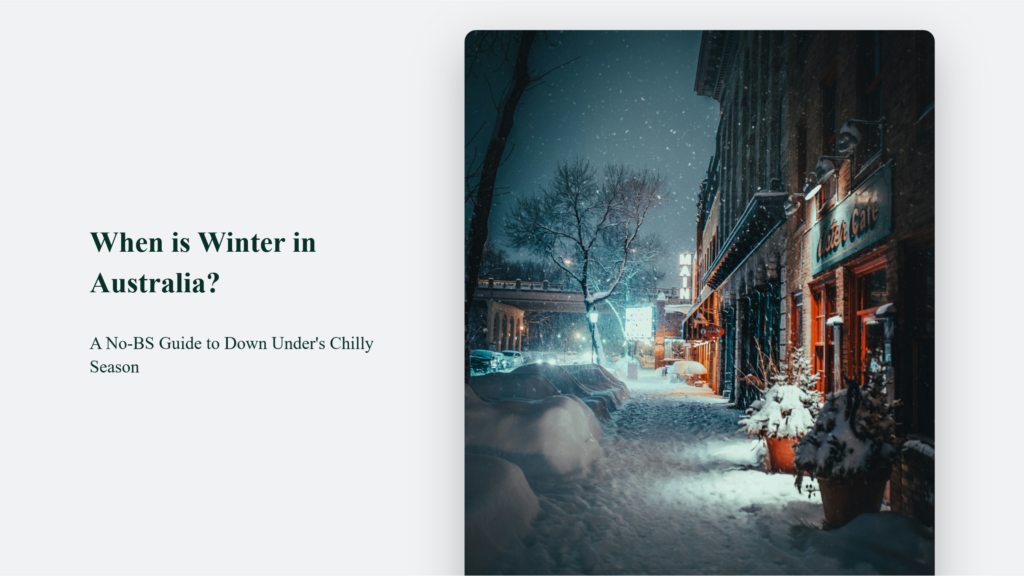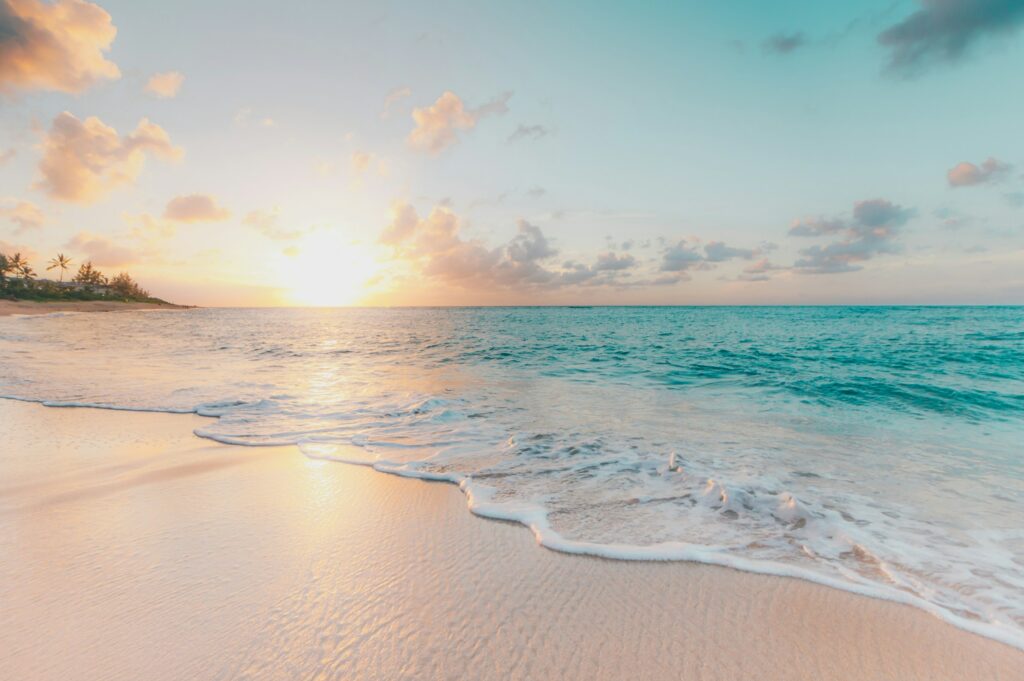Ah, winter. The season of cozy blankets, hot cocoa, and… surfing? Welcome to Australia, mate, where winter is different from what you’d expect. Let’s dive into the peculiar world of Australian winters, where you might find yourself building sandcastles instead of snowmen. So, let’s find out when is winter in Australia?

The Upside-Down Calendar: When Winter Actually Hits in the Northern Hemisphere
First things first: When is winter in Australia?
Brace yourself for a mind-bender if you’re from the Northern Hemisphere. Winter in Australia officially runs from June 1st to August 31st. That’s right, while your American friends are firing up the grill for a Fourth of July barbecue, Aussies are pulling on their Ugg boots (yes, they’re actually from Australia, not California).
But here’s the kicker: Australia is massive. We’re talking about a country that’s roughly the size of the continental United States. So when we talk about “winter in Australia,” we’re really talking about a whole spectrum of experiences, including colder winters in regions like the Northern Tablelands and the Snowy Mountains.
The Great Winter Divide
Picture this: You’re in Cairns, Queensland, lounging on the beach in 24°C (75°F) weather. Meanwhile, your Hobart, Tasmania mate is scraping ice off their windshield. Welcome to the Australian winter, where your experience depends entirely on your latitude.
Tropical North Queensland is an example of a region with mild winter weather, making it an attractive winter destination with beautiful beaches, swimming opportunities, and lush rainforests.
Let’s break it down:
- Northern Australia: Winter? What winter? Cities like Darwin barely notice a change, with average temperatures ranging from 19.3°C to 31.3°C (66.7°F to 88.3°F).
- Central Australia: Think mild days and chilly nights. Perfect for exploring the Outback without melting.
- Southern Australia: Now we’re talking proper winter. Cities like Melbourne and Hobart can drop to single digits Celsius (30s-40s Fahrenheit). South Australia, with its Mediterranean climate in southern coastal areas, also experiences notable weather phenomena like heatwaves and significant temperature records.
The Snow Down Under: Yes, It’s a Thing
Here’s a fact that blows many minds: Australia gets snow. And not just a little dusting – we’re talking serious powder. The Australian Alps receive more snow than the Swiss Alps. Let that sink in for a moment. If you’re itching to hit the slopes, head to:
- Thredbo, New South Wales
- Perisher, New South Wales
- Falls Creek, Victoria
- Mount Buller, Victoria
The ski season typically runs from June to late September or early October, with peak snow conditions in July and August. The snowy mountains in New South Wales, particularly the Snowy Mountains region, experience heavy snowfalls in winter and spring, making it the coldest region with prolonged snow and ice during winter months.
Winter Activities in Tropical North Queensland: Beyond the Beach (But Including the Beach)
You might think winter in Australia means hanging up your board shorts. Think again. Here’s a list of quintessential Aussie winter activities:
- Skiing and Snowboarding: Obviously.
- Beach Days: Yes, really. In Queensland, winter is the dry season, making it the perfect time to visit the beach without the summer crowds.
- Whale Watching: Winter is prime time for whale migration along the East Coast.
- Wine Tasting: Nothing warms you up like a good Shiraz.
- Hiking: Cooler temperatures make for perfect trekking weather in many parts of the country.
- Snorkeling and Diving at the Great Barrier Reef: Winter offers excellent conditions to explore the unique marine life.
- Visiting Tropical North Queensland: Enjoy beautiful beaches and lush rainforests, perfect for both the dry and wet seasons.
The Great Winter Wardrobe Dilemma in New South Wales
Packing for an Australian winter is like preparing for a weather roulette. You might need anything from a bikini to a parka, depending on where you’re going. Here’s a quick guide:
- Northern Australia: T-shirts, shorts, maybe a light jacket for evenings.
- Central Australia: Layers are key. Think T-shirts for the day, warm jackets for the night.
- Southern Australia: Break out the winter woollies. Coat, scarf, gloves – the works.
- Australian Capital Territory: Due to its high elevation, expect cool winters. Pack warm clothing, including a heavy coat and thermal wear.
Australia’s Winter: A Statistical Snapshot
Let’s crunch some numbers to give you a clearer picture:
Average winter temperatures in major cities:
- Sydney: 7.1°C – 18.3°C (44.8°F – 64.9°F)
- Melbourne: 6°C – 15°C (42.8°F – 59°F)
- Perth: 8°C – 18.9°C (46.4°F – 66°F)
- Hobart: 4.6°C – 13°C (40.3°F – 55.4°F)
- Western Australia: 5°C – 20°C (41°F – 68°F)
- The Australian ski industry contributes over $2 billion annually to the economy.
- The highest recorded snowfall in Australia was 361cm at Spencers Creek, NSW, in 1981.
The Bottom Line:
In conclusion, winter in Australia is a season of contrasts. It’s a time when you can ski through snow gums in the morning and watch a sunset over the ocean in the evening. It’s a season that defies expectations and offers experiences you won’t find anywhere else in the world.
So the next time someone asks you, “When is winter in Australia?”, you can confidently say, “It’s when the Northern Hemisphere is sweating through summer, and Aussies are proving that winter doesn’t always mean staying indoors.”
Remember, in Australia, winter isn’t just a season – it’s an adventure. Pack your sunscreen and your snow boots, and come see for yourself.
Frequently Asked Questions:
Do Australians celebrate Christmas in winter?
Nope, Christmas falls in summer here. Aussies often celebrate with barbecues and beach trips.
Can I still swim at the beach during the Australian winter?
In northern parts of Australia, absolutely. In the south, you might want to invest in a good wetsuit.




